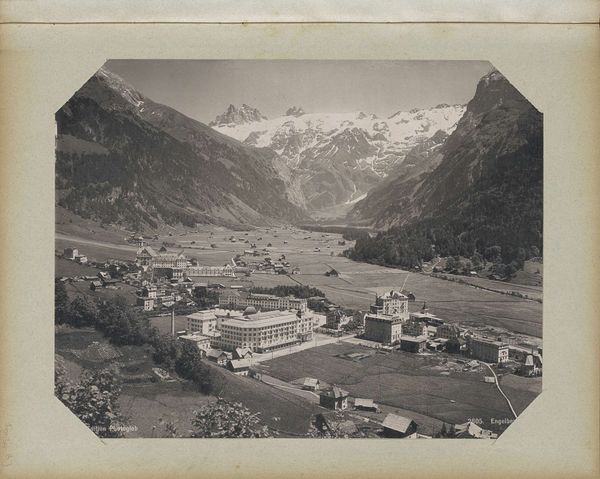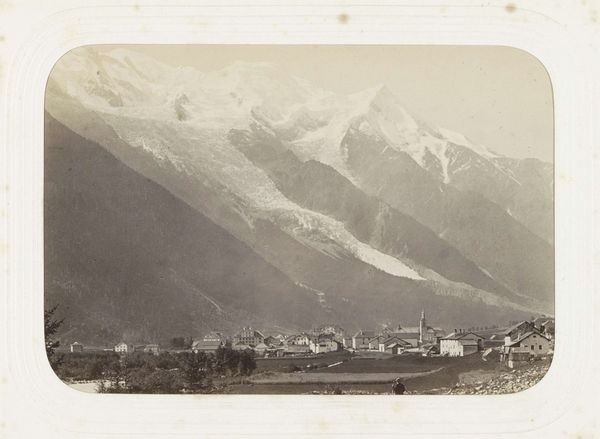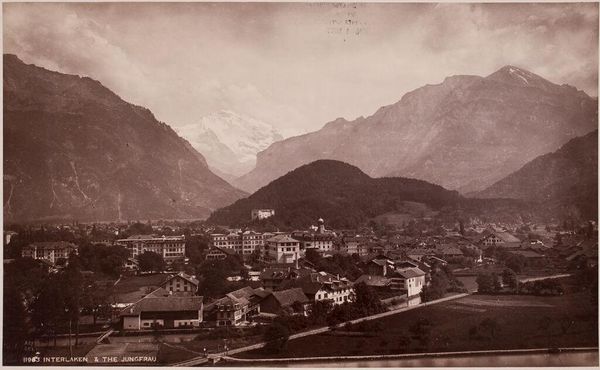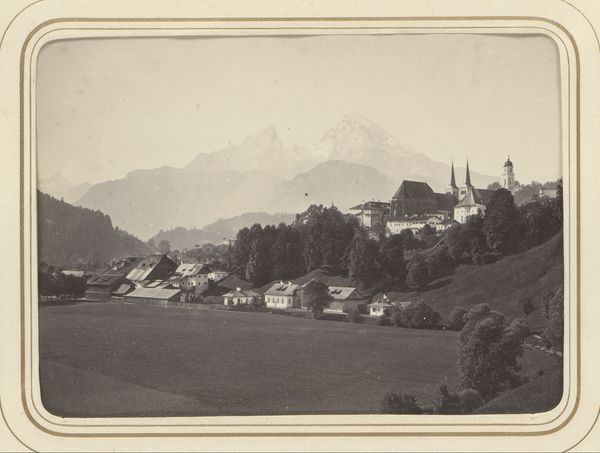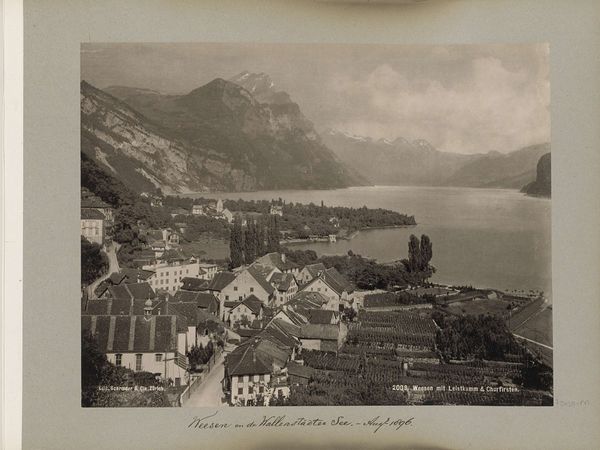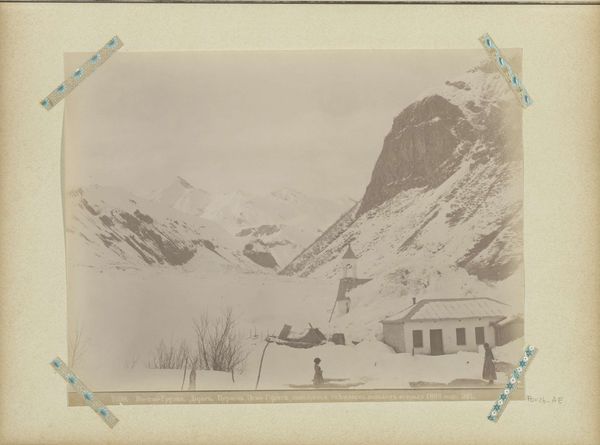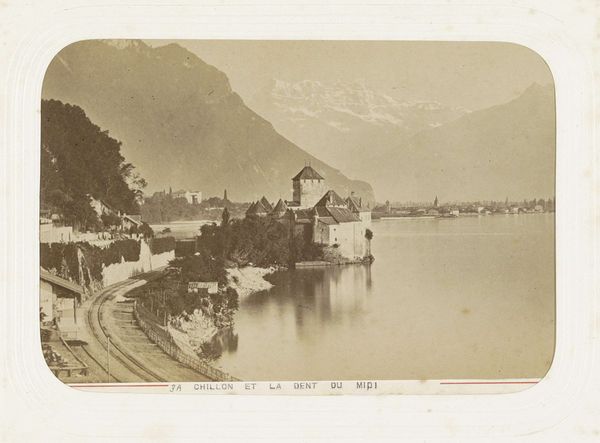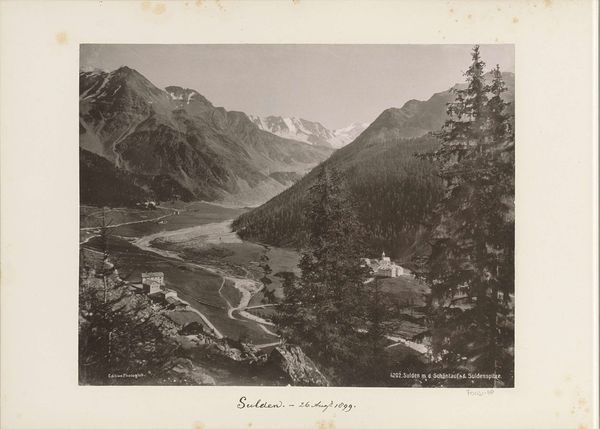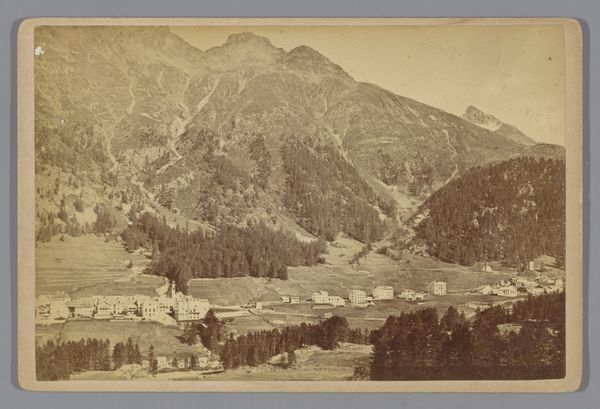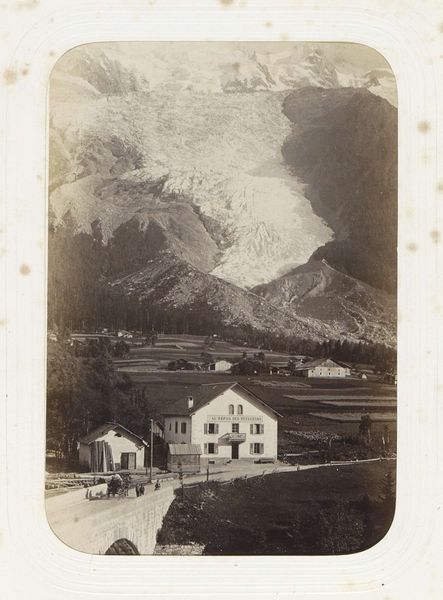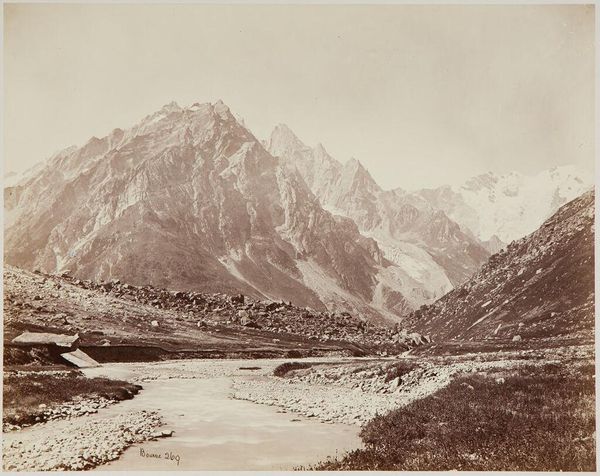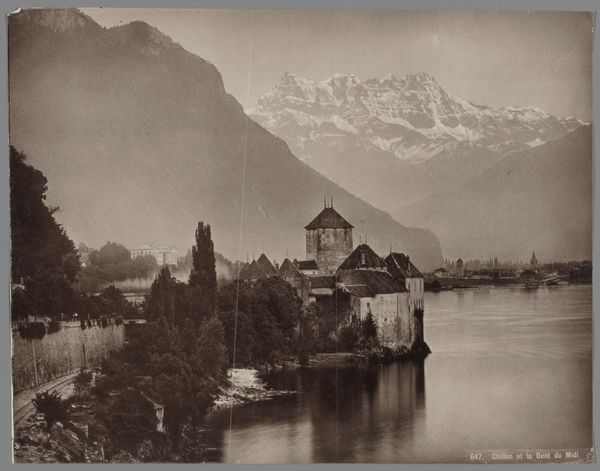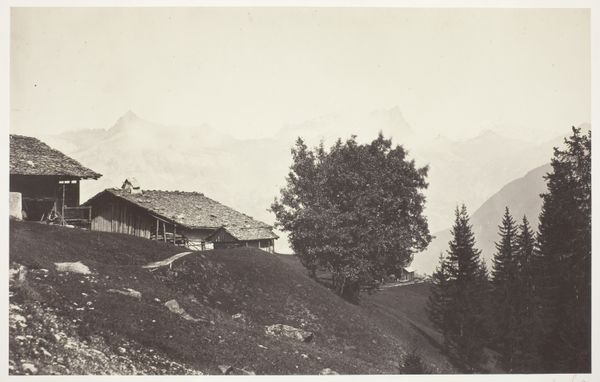
Gezicht op Brunnen aan het Meer van Luzern met op de achtergrond de Alpen c. 1880 - 1910
0:00
0:00
photography
#
lake
#
landscape
#
photography
#
19th century
Dimensions: height 210 mm, width 266 mm
Copyright: Rijks Museum: Open Domain
Curator: The photographic print before us, dating roughly from 1880 to 1910, is titled "Gezicht op Brunnen aan het Meer van Luzern met op de achtergrond de Alpen," placing it firmly in Brunnen, Switzerland, on the shores of Lake Lucerne with the Alps in the distance, created by Photoglob & Co. Editor: There's an incredible stillness to this image; the greyscale lends a sense of timelessness. The lake mirroring the sky creates an almost perfect symmetry disrupted only by the mountains—monolithic and awe-inspiring. Curator: Absolutely. Landscape photography like this, especially in the late 19th century, reflects the growing romantic interest in nature, the sublime, and the construction of national identities intertwined with these landscapes. Consider the colonial gaze embedded within depictions of untouched landscapes; who gets to define and benefit from this visual narrative of Switzerland? Editor: You’re right, it's impossible to ignore the implied narrative of access. Visually, though, my eye keeps returning to the composition itself. The water’s reflective quality—water is a powerful symbol that transcends culture. In Jungian psychology, water often represents the unconscious. Perhaps the mountains represent obstacles of clarity and reflection to be seen? Curator: I'd also encourage us to consider this image within the history of travel and tourism. The late 19th century saw an explosion of tourist travel, fueled by industrialization and increased leisure time for specific classes. Photographs such as this served not only as mementos, but also as marketing tools to perpetuate the region, both visually and politically. Editor: So true, photography cemented our visual understanding of place. Those alpine peaks in the background serve as universal markers—strength and serenity. In a sense, these snow-covered peaks remain markers in landscape photography today. Curator: Indeed. It reveals the complex relationship between identity, landscape, and the power of visual representation within sociopolitical histories. Editor: A striking image that transcends eras with questions that still persist today, don't you agree?
Comments
No comments
Be the first to comment and join the conversation on the ultimate creative platform.
